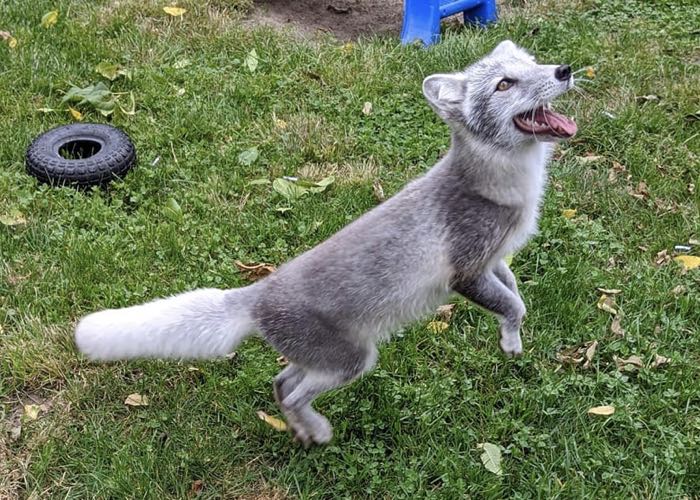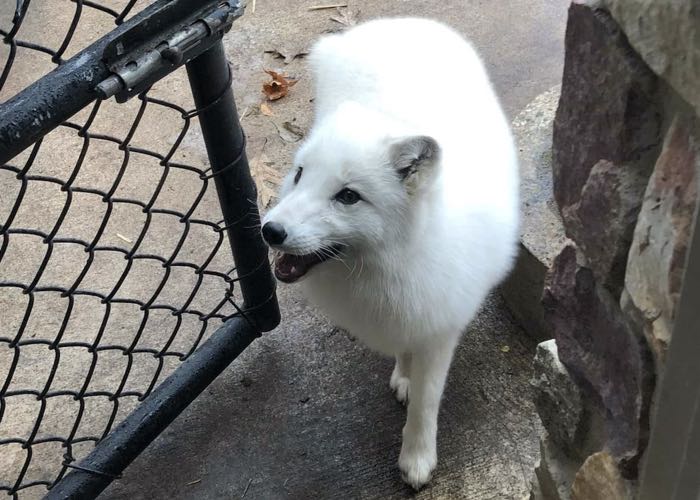Arctic Fox
Vulpes Lagopus
Conservation Status: Least Concern
Characteristics:
- The artic fox has a thick white coat in the winter months. In May, they shed to a two-tone brown fur.
- They have a compact body, short snout, and small ears to minimize heat loss.
- Their thick coat and padded feet help keep them insulated throughout the year and rarely need to seek shelter.
- The thick fur enables them to maintain a constant body temperature and provides insulation.
- They are a member of the canidae family of animals related to other foxes, wolves, and dogs.
Lifespan: Arctic foxes live for 3 to 4 years in the wild and up to 14 years in captivity.
Range and Habitat:
- They are found throughout the northern barren lands of the world.
- They prefer barren lands because the snow is hard and shallow.
- They also like to be around the tops of ponds or river beds.
- They live in burrows with extensive tunnel systems but in a blizzard they are known to tunnel in the snow to create shelter.

Diet:
- They are known for their hunting style – carnivores and scavengers.
- They hunt rodents, birds, and fish.
- In winter when prey is scarce, they are known to follow in the footsteps or the polar bear and feed on the leftover scraps.
Behavior:
- They are primarily solitary living on the Arctic tundra and pack ice.
- They are monogamous animals that mate for life.
- They do not hibernate.
Fun Facts:
- They are the smallest wild canid found in Canada.
- The have the warmest pelt of any animal found in the Arctic enduring temperatures of -70 degrees Celsius.
- They give birth in the spring to litters of pups as large as 5 to 8.
Keeper Notes:
Apollo came to the zoo on December 11, 2019. Apollo was originally a pet who was given up by his owners.

Who says you can’t wear white after Labor Day? Apollo is sporting the latest fall fashion as his coat starts to turn white for the winter! In the wild, arctic foxes need to be the same color as the snow to be able to hunt through the winter months.

